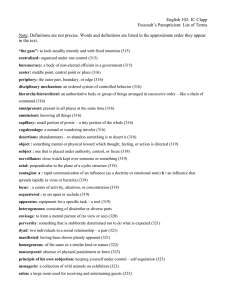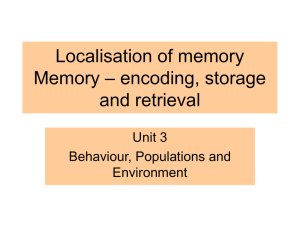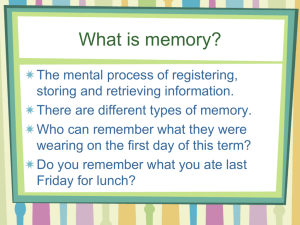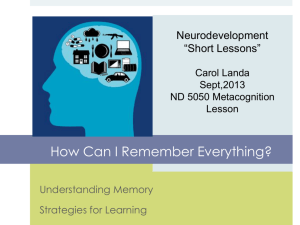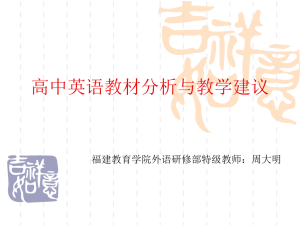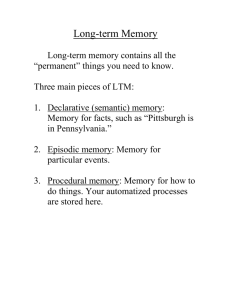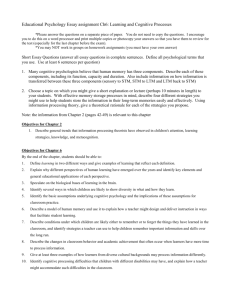910805_ICL_TWO-STORE MEMORY MODEL
advertisement
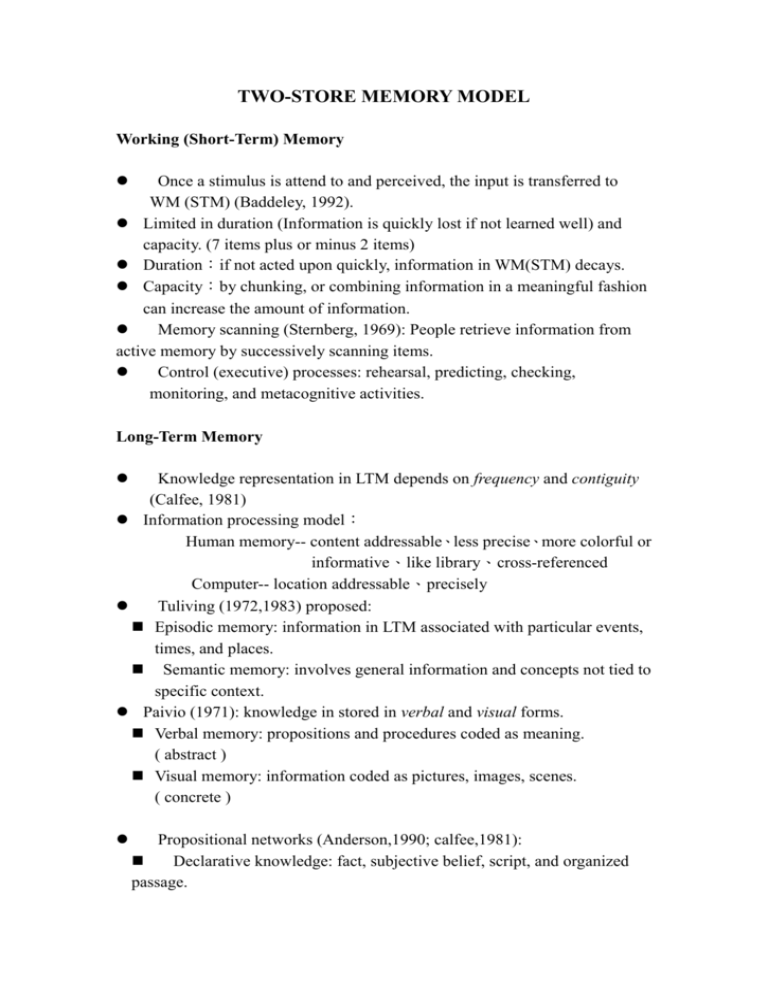
TWO-STORE MEMORY MODEL Working (Short-Term) Memory Once a stimulus is attend to and perceived, the input is transferred to WM (STM) (Baddeley, 1992). Limited in duration (Information is quickly lost if not learned well) and capacity. (7 items plus or minus 2 items) Duration:if not acted upon quickly, information in WM(STM) decays. Capacity:by chunking, or combining information in a meaningful fashion can increase the amount of information. Memory scanning (Sternberg, 1969): People retrieve information from active memory by successively scanning items. Control (executive) processes: rehearsal, predicting, checking, monitoring, and metacognitive activities. Long-Term Memory Knowledge representation in LTM depends on frequency and contiguity (Calfee, 1981) Information processing model: Human memory-- content addressable、less precise、more colorful or informative、like library、cross-referenced Computer-- location addressable、precisely Tuliving (1972,1983) proposed: Episodic memory: information in LTM associated with particular events, times, and places. Semantic memory: involves general information and concepts not tied to specific context. Paivio (1971): knowledge in stored in verbal and visual forms. Verbal memory: propositions and procedures coded as meaning. ( abstract ) Visual memory: information coded as pictures, images, scenes. ( concrete ) Propositional networks (Anderson,1990; calfee,1981): Declarative knowledge: fact, subjective belief, script, and organized passage. Procedural knowledge: concept, rule, and algorithm. Conditional knowledge: employ forms of declarative and procedural knowledge. Influences on Encoding Encoding: put new information into the information into the information processing system and preparing it for storage in LTM. Three import factors that influence encoding: organization, elaboration, schemata. Organization: well-organized material is easier to learn and recall. (Katona,1940). There are three ways to organize material : hierarchy, mnemonic devices, mental imagery. Elaboration: The process of expanding upon new information by adding to it or linking it to what one knows. Maintenance rehearsal Elaborate rehearsal Mnemonic devices Schemata: is a structure that organizes large amount of information into a meaningful system. Schemata aid in comprehending information. (Bartlett, 1932) Any well-ordered sequence can be represented as a schema. Schemata are important because they indicate what to expect in a situation. Schemata assist encoding because they elaborate new material into a meaningful structure. Using schema highlights important information.
